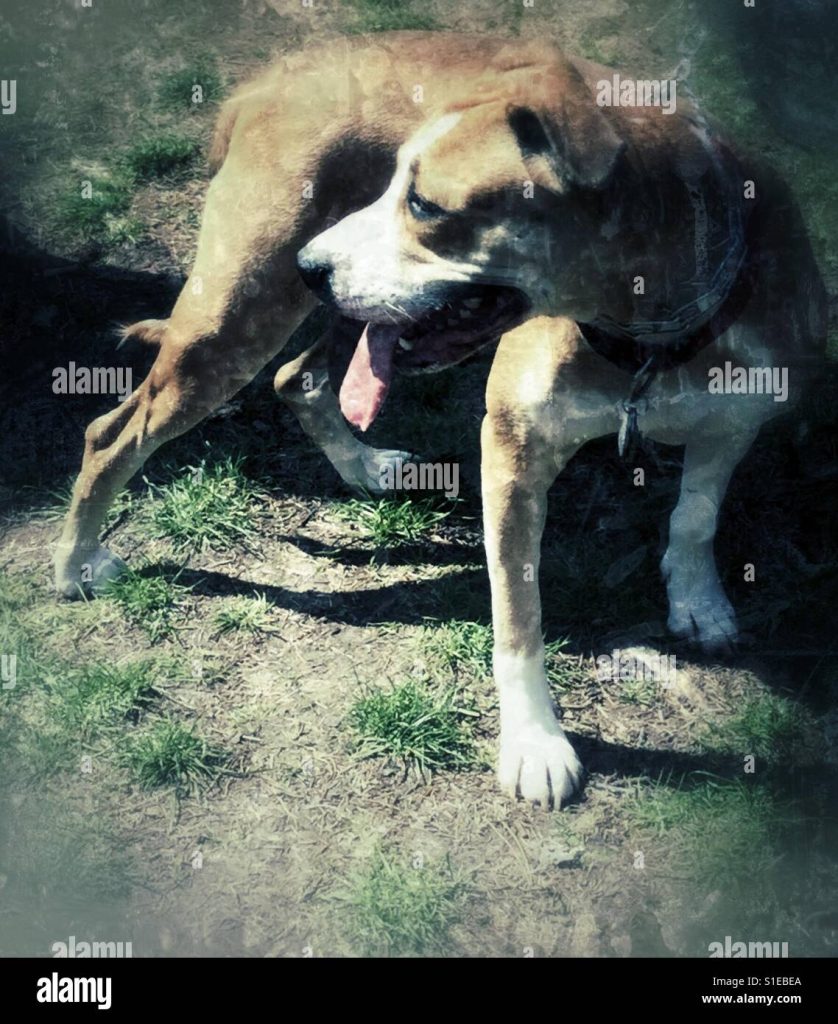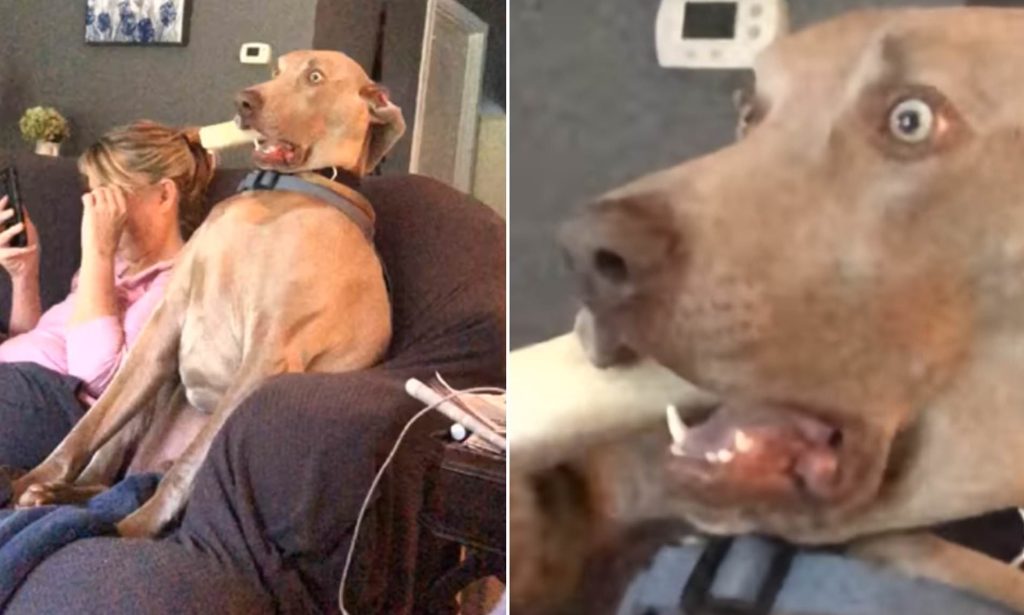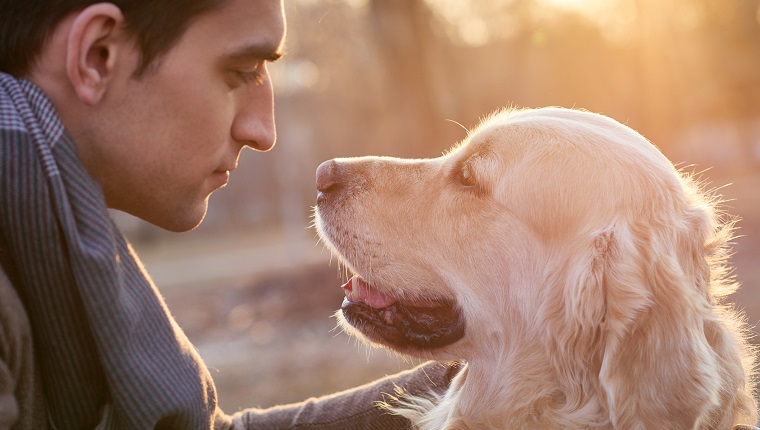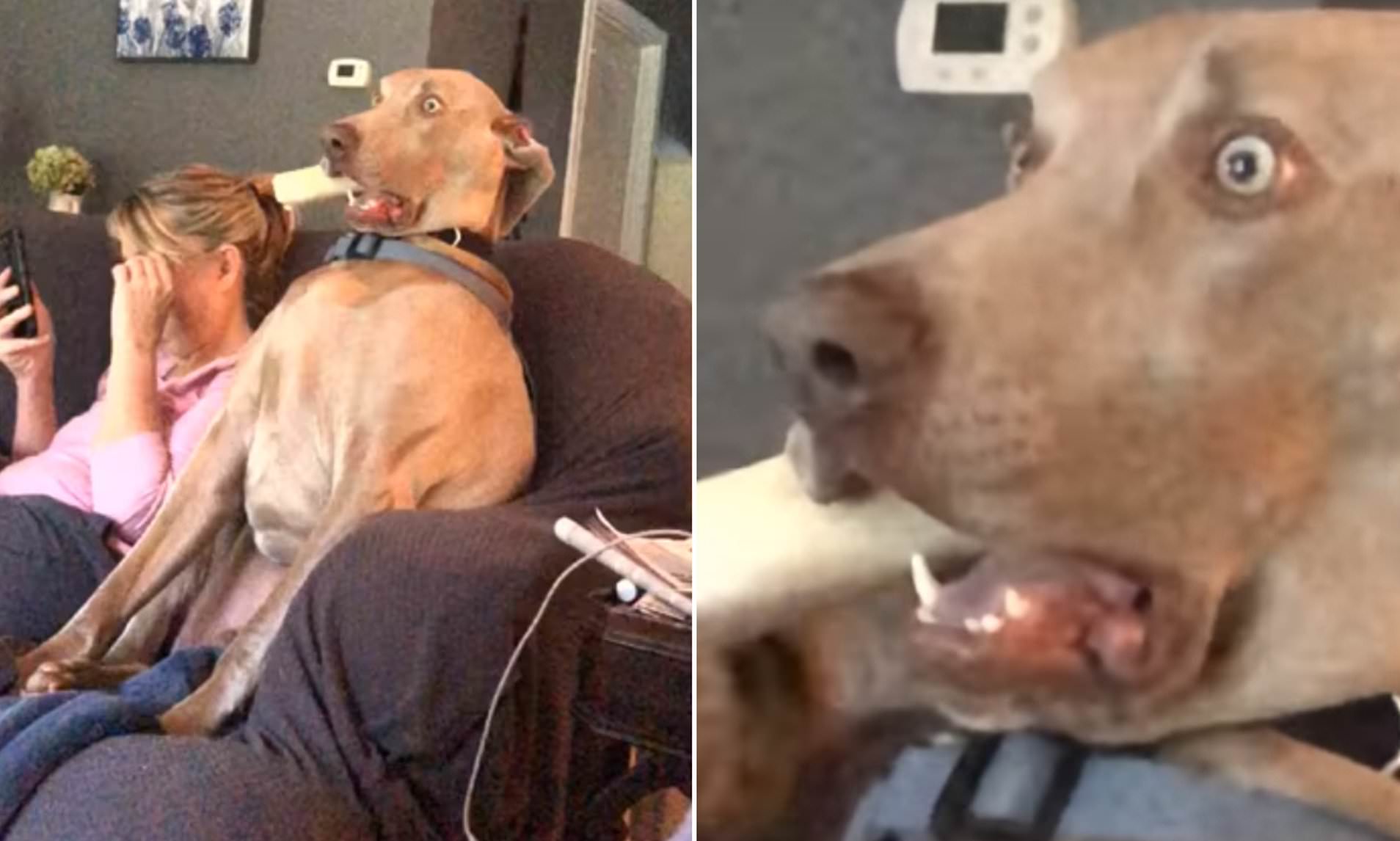Contents
- Understanding a Dog’s Gaze
- Factors Influencing Intense Dog Gazes
- Importance of Eye Contact between Humans and Dogs
- The Science behind Dog Gazing
- Positive and Negative Aspects of Intense Dog Gazes
- Training Approaches and Techniques for Dog Gazing
- Common Misconceptions about Dog Gazes
- Capturing and Preserving Meaningful Gaze Moments
- Ethical Considerations in Dog Gazing
- The Enduring Fascination of a Dog’s Intense Gaze
Imagine being transfixed by the intense gaze of a dog, as if they could see right into your soul. In those captivating moments, time seems to stand still, and a connection forms between human and canine that is beyond words. This article explores the power and allure of a dog’s intense gaze, delving into the emotions it evokes and the bonds it creates. Prepare to be enchanted by the raw emotion and unwavering devotion that can be found in the depths of a dog’s eyes.
Understanding a Dog’s Gaze
An Introduction to Dog Gazing
Have you ever found yourself captivated by the intense gaze of a dog? Dog gazing is a fascinating aspect of canine behavior that plays a vital role in their communication with humans and other animals. When a dog looks directly into your eyes, it can evoke a profound sense of connection and understanding. In this article, we will delve into the world of dog gazing, exploring its significance, the factors that influence it, and the importance of eye contact in the human-canine bond.
The Role of Eye Contact in Canine Communication
For dogs, eye contact serves as a powerful form of nonverbal communication. When a dog maintains eye contact with you, it can convey a multitude of messages. It may indicate trust, affection, or a desire for attention. Conversely, avoiding eye contact can signal fear, submission, or aggression. Understanding these cues is crucial for interpreting a dog’s intentions and emotions accurately.
Interpreting Different Types of Dog Gazes
Not all dog gazes are the same, and each type conveys a distinct message. A soft, relaxed gaze with a slightly squinted expression often indicates contentment, comfort, and affection. On the other hand, a tense or prolonged stare may suggest dominance, threat, or an attempt to exert control. Dogs may also use direct eye contact as a request for assistance or as a plea for food or playtime. Interpreting these various types of gazes can deepen your understanding of a dog’s needs and desires.
The Importance of Gazing in the Human-Canine Bond
Gazing plays a critical role in forging a strong bond between humans and dogs. Through eye contact, trust and connection can be established, enhancing the overall relationship. Dogs have evolved alongside humans for thousands of years, and eye contact has become an essential means of communication between the two species. By understanding the significance of gazing, you can strengthen the unique bond you share with your furry friend.
Factors Influencing Intense Dog Gazes
Breed-Specific Gaze Behavior
Different dog breeds may exhibit varying patterns of gazing behavior. Some breeds are more prone to prolonged eye contact, while others may rely more on body language and vocalizations for communication. Understanding breed-specific gaze behavior can help you interpret and respond appropriately to your dog’s attention-seeking or communication efforts.
Socialization and Bonding
The early socialization experiences a dog has during puppyhood can significantly influence their gaze behavior as adults. Dogs that have been properly socialized with humans, other dogs, and various environments are more likely to engage in positive and comfortable eye contact. Bonding experiences, such as training sessions, interactive play, and daily routines, also contribute to the development of a strong and trusting gaze between dogs and their human companions.
Training and Reinforcement
Training plays a crucial role in establishing desired behaviors, including appropriate gazing. Dogs can be trained to maintain direct eye contact on cue, which can be useful for activities such as obedience, agility, or therapy work. Positive reinforcement techniques, such as rewarding a dog for making eye contact, can strengthen the bond between you and your furry friend while encouraging attentive and engaging gazes.
Emotional States and Arousal
A dog’s emotional state and level of arousal can greatly impact their gaze behavior. A calm and relaxed dog may engage in soft and contented eye contact, reflecting their overall emotional well-being. Conversely, a stressed or anxious dog may avoid eye contact or exhibit intense and unfocused stares, signaling their discomfort. By recognizing these emotional states through gaze cues, you can provide appropriate support and ensure your dog feels safe and secure.
Environmental Stimuli
Environmental factors such as noise, unfamiliar surroundings, or the presence of other animals can influence a dog’s gaze behavior. Some dogs may become more vigilant and alert, scanning their surroundings and maintaining steady eye contact to assess potential threats. Others may become distracted or disengaged from eye contact when faced with overwhelming or unfamiliar stimuli. Recognizing how the environment impacts your dog’s gaze can help you support them in navigating their surroundings.
Importance of Eye Contact between Humans and Dogs
Building Trust and Connection
Eye contact is a powerful tool for building trust and connection between humans and dogs. Through consistent and positive eye contact, dogs can learn to rely on their human companions for guidance, protection, and emotional support. Trusting gazes convey a sense of security and deepen the bond between you and your furry companion.
Establishing Communication
Effective communication is the cornerstone of any successful relationship, and dogs rely on eye contact to convey their needs and desires. By maintaining eye contact with your dog, you can establish a channel of communication that goes beyond words. Your dog may use their gaze to indicate a desire for play, the need to relieve themselves, or simply to seek your attention.
Enhancing Emotional Understanding
Dogs are highly perceptive creatures who can read human emotions remarkably well. Making eye contact with your dog allows them to tune in to your emotional state and respond accordingly. A warm and comforting gaze from your dog can provide solace during times of distress, while an understanding look can convey empathy and compassion.
Strengthening the Human-Canine Relationship
By actively engaging in eye contact with your dog, you actively strengthen the unique bond you share. Through their gaze, dogs express their love, loyalty, and devotion. By reciprocating their gaze and acknowledging their efforts to communicate with you, you solidify the connection between you and your furry friend.
The Science behind Dog Gazing
Neurobiology of Eye Contact in Dogs
Scientists have discovered fascinating insights into the neurobiology of eye contact in dogs. Studies reveal that when dogs engage in eye contact with humans, their brains release oxytocin, often referred to as the “love hormone.” This hormone promotes feelings of trust, social bonding, and attachment. The neurobiological response to eye contact further strengthens the emotional connection between humans and dogs.
Hormonal Responses and Bonding
The release of oxytocin during eye contact is not limited to dogs but also occurs in humans. This hormone is associated with forming and strengthening emotional bonds between individuals. The mutual exchange of oxytocin during eye contact between humans and dogs may explain the deep emotional connection and bond that develops.
Comparative Psychology Studies
Comparative psychology studies explore the similarities and differences in gaze behavior between humans and dogs. These studies aim to understand the evolutionary and cultural aspects of eye contact and its impact on human-animal relationships. By examining the scientific evidence, we can gain a deeper appreciation for the unique qualities of dog gazing.
Evolutionary Significance
The ability to engage in eye contact is believed to have evolved as a fundamental aspect of social communication in both humans and dogs. Early humans likely used eye contact to establish trust, coordinate activities, and convey intentions. As humans domesticated canines, dogs have adapted to better understand and respond to our communicative cues, including gaze. The evolutionary significance of eye contact underscores its importance in the human-canine bond.

Positive and Negative Aspects of Intense Dog Gazes
Positive Interpretations of Dog Gazes
Intense dog gazes can have several positive meanings. A loving and affectionate gaze, accompanied by a wagging tail and a relaxed body, indicates trust, devotion, and a desire for connection. Dogs may also use their gaze to seek validation, attention, or to initiate play. These positive interpretations of intense dog gazes highlight the powerful emotional connection and friendship that can exist between humans and dogs.
Signs of Trust and Affection
When a dog gazes into your eyes with a soft, relaxed expression, it is often a sign of trust and affection. By maintaining eye contact, they are showing their vulnerability and openness towards you. This sincere connection fosters a strong bond between you and your furry friend, based on mutual love and respect.
Eliciting Attention and Response
Intense dog gazes can also serve as a means of capturing your attention. Dogs may use their gaze to communicate their needs, such as hunger, thirst, or the need to go outside. By making direct eye contact, they hope to elicit a response or prompt you to take appropriate action to fulfill their requirements.
Potential Challenges and Misunderstandings
While intense dog gazes typically convey positive emotions, there are instances where misinterpretation can lead to challenges and misunderstandings. Dogs may fixate their gaze due to fear or anxiety, signaling discomfort or a desire for personal space. It is essential to be mindful of a dog’s body language and context when interpreting their gaze, as misreading their intentions can potentially escalate or ignite conflicts.
Training Approaches and Techniques for Dog Gazing
Focus and Attention Training
Training your dog to make and maintain eye contact on cue is a valuable skill for both obedience and everyday life. Focus and attention training can be achieved through positive reinforcement techniques, such as treats, praise, or play rewards. By reinforcing eye contact during training sessions, your dog becomes more responsive to your cues and strengthens your communication bond.
Eye Contact as a Cue
Eye contact can be used as a cue for specific actions or behaviors, such as sitting, staying, or waiting. By teaching your dog that eye contact is linked to desired outcomes, you can create a strong association between gazing and appropriate responses. Consistency, patience, and positive reinforcement are the keys to effectively incorporating eye contact cues into your training routine.
Using Rewards and Positive Reinforcement
Positive reinforcement is a powerful tool for shaping desired behaviors in dogs. When teaching your dog to gaze at you, rewarding them with treats, praise, and affection creates a positive association with maintaining eye contact. This reinforcement encourages dogs to engage in attentive and focused gazes, strengthening the bond and trust between you and your furry companion.
Managing Unwanted Staring Behaviors
While eye contact is generally desirable, some dogs may exhibit unwanted staring behaviors that can indicate aggression, resource guarding, or discomfort. In such cases, it is important to consult with a qualified professional, such as a veterinarian or a certified dog trainer. They can provide guidance and strategies to manage and modify these behaviors effectively and ensure the well-being of both you and your dog.

Common Misconceptions about Dog Gazes
Dominance and Alpha Theories
There is a common misconception that a dog’s intense gaze is a display of dominance or an attempt to assert alpha status. However, this theory has been widely debunked in recent years. Intense gazing is often a reflection of emotional connection, trust, or a request for attention, rather than an assertion of dominance.
Aggression and Threat Perception
Misunderstanding a dog’s gaze as aggression or a threat can lead to unnecessary fear and anxiety. While prolonged or fixed stares can indicate discomfort or potential conflict, it is important to consider the overall body language and context before jumping to conclusions. Observing other accompanying cues, such as facial expressions, tail position, and posture, provides a more accurate understanding of a dog’s intentions.
Superstitions and Myths
Throughout history, various superstitions and myths have perpetuated misconceptions about dog gazes. Some people believe that dogs can cast spells or transmit negative energy through their eyes. These unfounded beliefs are not rooted in scientific evidence and should be disregarded. Understanding the true nature and significance of dog gazes allows for a more informed and realistic perspective.
Understanding Individual Differences
Every dog is unique, and their gaze behavior can vary based on their breed, temperament, and individual experiences. It is essential to recognize and respect these individual differences when interpreting a dog’s gaze. Taking into account their personality and upbringing helps to establish a better understanding and appreciation for their unique way of communicating.
Capturing and Preserving Meaningful Gaze Moments
Photography Tips for Capturing Dog Gazes
The intense gaze of a dog can make for captivating and memorable photographs. To capture these meaningful gaze moments, use natural lighting or soft lighting techniques to enhance the mood and focus on your dog’s eyes. Patience and wait for the perfect moment when your dog looks directly into the camera lens, revealing their soulful expression.
Creating Artistic Portraits
Dog gazes can be the inspiration for creating stunning, emotional portraits. Utilize various artistic techniques, such as close-up shots, black and white photography, or macro photography, to draw attention to your dog’s eyes and capture the depth of their emotions. These portraits can serve as timeless reminders of the special bond you share with your furry companion.
Preserving Memories
Whether through photography or other forms of art, preserving memories of your dog’s intense gaze allows you to cherish those special moments forever. These memories can be celebrated through photo albums, framed prints, or personalized keepsakes. Reflecting on these captured gazes brings joy and serves as a beautiful testament to the love and connection you share.
Sharing Gaze Moments on Social Media
In today’s digital age, sharing cherished dog gaze moments on social media has become popular among dog lovers. These shared moments not only celebrate the beauty of the human-canine bond but also inspire and connect with other dog enthusiasts around the world. By sharing your dog’s intense gazes, you contribute to a collective celebration of the love and appreciation for our four-legged friends.

Ethical Considerations in Dog Gazing
Respectful Handling and Consent
Respecting your dog’s boundaries and consent is of utmost importance when engaging in eye contact. Some dogs may find intense or prolonged eye contact discomforting or invasive. Always observe and respect your dog’s cues and body language. If your dog averts their gaze or appears uneasy, it is essential to give them space and avoid pressuring them into making eye contact.
Avoiding Stress and Discomfort
Intense dog gazes should always be a positive and enjoyable experience for both you and your dog. Avoid engaging in prolonged staring sessions that may cause stress or discomfort. Respect your dog’s need for breaks, rest, and personal space. Balancing gaze interactions with other forms of communication and play will ensure a well-rounded and fulfilling relationship.
Understanding Boundaries
Every dog has their own comfort zone regarding eye contact. It is crucial to recognize and honor their individual boundaries. Some dogs may prefer shorter and sporadic gazes, while others may enjoy more extended periods of eye contact. Paying attention to your dog’s preferences and adjusting your interactions accordingly fosters a healthier and more respectful connection.
Awareness of Cultural Differences
Dog gazing behaviors and interpretations may vary across different cultures and societies. What is considered appropriate or desirable in one culture may be seen as offensive or intrusive in another. It is vital to be aware and respectful of cultural differences when engaging in dog gazing, either within your community or when traveling abroad. Being culturally sensitive ensures that your interactions with dogs and their owners are positive and inclusive.
The Enduring Fascination of a Dog’s Intense Gaze
Timeless Beauty and Expression
The intense gaze of a dog holds a timeless beauty that transcends words and language. Dogs can express a wide range of emotions and intentions through their eyes, from pure joy and excitement to deep understanding and compassion. Their gaze serves as a window into their soul, captivating our hearts and fostering a profound sense of connection.
Unspoken Emotion and Connection
Dog gazes often convey emotions that remain unspoken. Their eyes sparkle with affection, trust, and unwavering loyalty. These powerful emotions create an unbreakable bond between humans and dogs, built on shared experiences, respect, and unconditional love. The unspoken connection formed through intense gazes is a testament to the profound impact dogs have on our lives.
Continuing Research and Discoveries
The field of canine behavior and communication is constantly evolving, and research on dog gazing continues to uncover new insights and discoveries. Scientists and experts are conducting ongoing studies to deepen our understanding of the neural, psychological, and emotional aspects of dog gaze. Through this research, we are gaining a better appreciation for the intricacies of dog-human interactions and the significance of intense gazes.
Appreciating the Bond between Humans and Dogs
Ultimately, the enduring fascination with a dog’s intense gaze lies in the appreciation of the extraordinary bond between humans and dogs. Throughout history, dogs have been our companions, protectors, and sources of comfort. Their unwavering loyalty and endearing gazes remind us of the depth of our connection and inspire us to cherish and nurture the special relationship we share.
In conclusion, understanding and appreciating a dog’s gaze is essential for fostering a strong, trusting, and loving bond between humans and canines. Through eye contact, we establish communication, enhance emotional understanding, and build a lifelong connection. By recognizing the factors that influence intense dog gazes, embracing positive interpretations, and employing effective training techniques, we can deepen our bond with our furry friends and create meaningful and lasting memories. Let us cherish the captivating moments of a dog’s intense gaze and celebrate the enduring beauty of the human-canine relationship.












